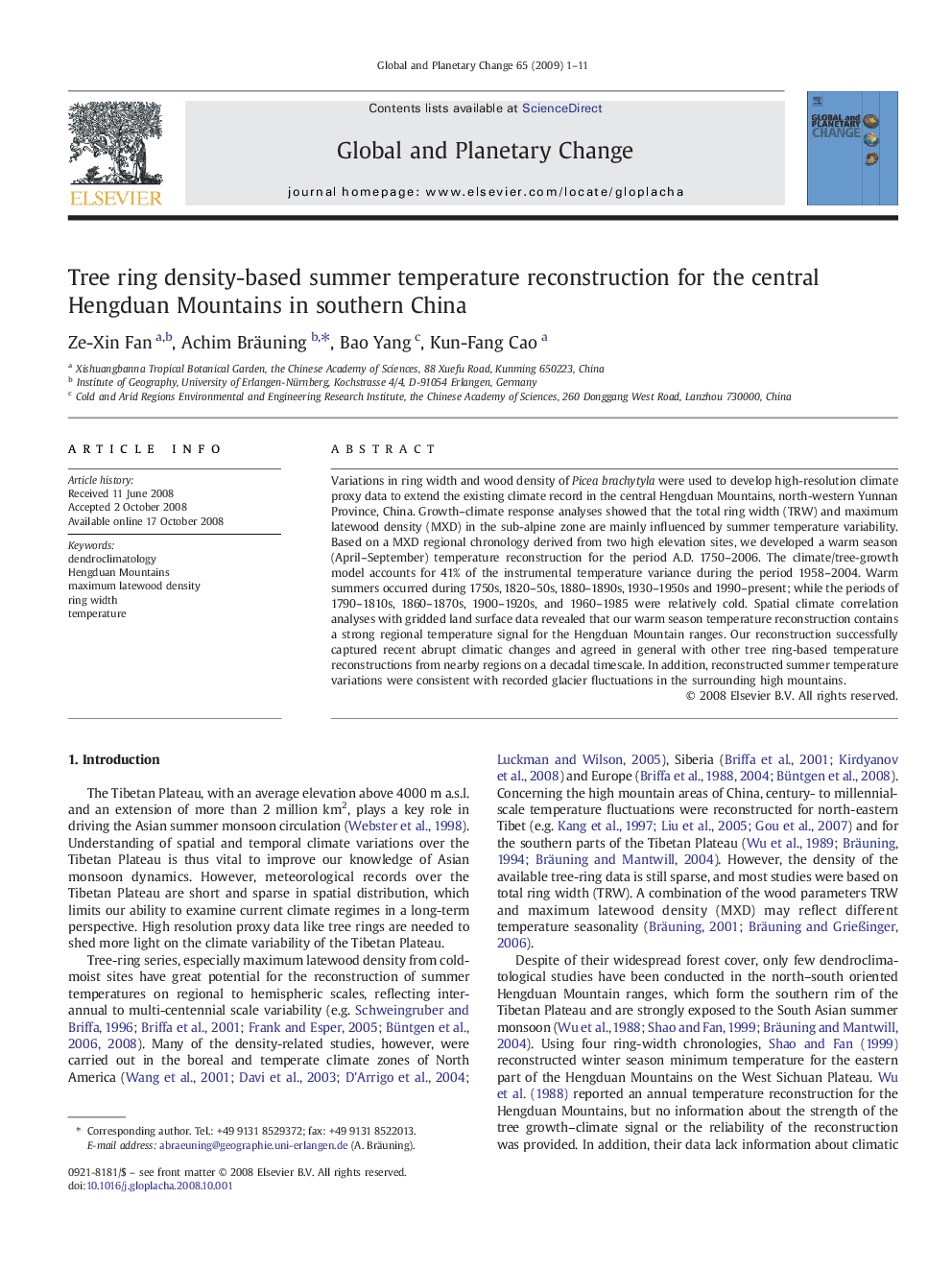| کد مقاله | کد نشریه | سال انتشار | مقاله انگلیسی | نسخه تمام متن |
|---|---|---|---|---|
| 4464105 | 1621716 | 2009 | 11 صفحه PDF | دانلود رایگان |

Variations in ring width and wood density of Picea brachytyla were used to develop high-resolution climate proxy data to extend the existing climate record in the central Hengduan Mountains, north-western Yunnan Province, China. Growth–climate response analyses showed that the total ring width (TRW) and maximum latewood density (MXD) in the sub-alpine zone are mainly influenced by summer temperature variability. Based on a MXD regional chronology derived from two high elevation sites, we developed a warm season (April–September) temperature reconstruction for the period A.D. 1750–2006. The climate/tree-growth model accounts for 41% of the instrumental temperature variance during the period 1958–2004. Warm summers occurred during 1750s, 1820–50s, 1880–1890s, 1930–1950s and 1990–present; while the periods of 1790–1810s, 1860–1870s, 1900–1920s, and 1960–1985 were relatively cold. Spatial climate correlation analyses with gridded land surface data revealed that our warm season temperature reconstruction contains a strong regional temperature signal for the Hengduan Mountain ranges. Our reconstruction successfully captured recent abrupt climatic changes and agreed in general with other tree ring-based temperature reconstructions from nearby regions on a decadal timescale. In addition, reconstructed summer temperature variations were consistent with recorded glacier fluctuations in the surrounding high mountains.
Journal: Global and Planetary Change - Volume 65, Issues 1–2, January 2009, Pages 1–11